 |
King of Chemicals Manufacturers |
Specifications, Properties, Uses, SDS of Sodium Sulfite or Sodium Sulphite BP Ph Eur USP NF EP Analytical Reagent FCC Food GradeManufacturer Supplier Exporter Wholesale & Small Packs, CAS Number 7757-83-7. |
|
| King of Chemicals has several associated companies having accreditations like cGMP, GLP - FDA Approved Good Manufacturing Practice and Good Laboratory Practice of WHO standard, ISO-9001, ISO-14001, ISO/IEC 17025, ISO ISO-45000, HACCP, FSSC 220000, FSSAI, "REACH" Registered, Kosher & Halal Certified. e-CTD and DMF support can be made available if needed. We offer USP NF BP Ph Eur EP IP JP Analytical Reagent FCC Food Grade Chemicals & Nutraceuticals. | |
        |
|
Muby Chem Pvt. Ltd. is a several decades old group of companies, engaged in manufacturing, supplying, distributing, wholesale supplies of Sodium Sulfite or Sodium Sulphite BP Ph Eur USP NF EP Reagent FCC Food Grade for actual users, including retail or small pack supplies for research and development work.
We supply fine and speciality chemicals, pharmaceutical excipients, mineral fortifiers in chemically pure, analytical reagent grade, IP BP USP Ph Eur EP JP and other pharmaceutical grade monograph including FCC Food grade chemicals and Nutraceuticals at best prices. We and/or our associated units have all the facilities to supply as per cGMP standard observing good manufacturing practice and good laboratory practice. We can assure low microbial count and also offer a test certificate for the same. We maintain warehouses across USA, India, and UAE. Our group exports to USA, Canada, Mexico, Argentina, Brazil, Chile, Korea, Malaysia, Thailand, Indonesia, Europe, and several other parts of the world. We supply in wholesale container loads to small pack of few grams. Solid products may be specified for it size and shape as desired by the buyer.
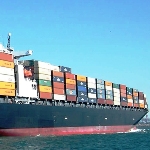
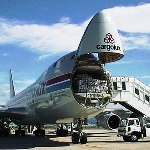
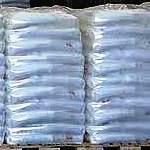
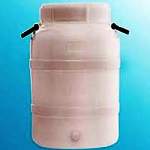
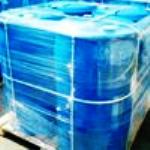
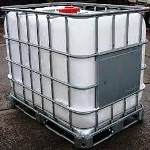
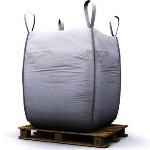
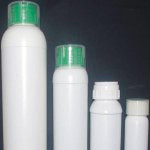
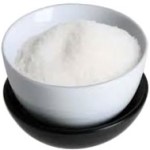
Sodium Sulfite or Sodium Sulphite CAS Number 7757-83-7
For Properties Specifications Uses of Sodium Sulfite or Sodium Sulphite Click Properties, Specifications, Uses, Price, Process of Sodium Sulfite or Sodium Sulphite Manufacturer.
For For SDS MSDS Sheet of Sodium Sulfite or Sodium Sulphite Click SDS Safety Data Sheet MSDS Sheet of Sodium Sulfite or Sodium Sulphite Manufacturer.
The Properties, Specifications, Monograph and Uses of Sodium Sulfite or Sodium Sulphite:
Sodium Sulfite or Sodium Sulphite is used as an antioxidant, preservative, and in various industrial processes.
Sodium Sulfite USP NF Grade Specifications
Na2SO3 -- 126.0 CAS 7757-83-7
Contains not less than 95.0 percent and not more than 100.5 percent of Na2SO3
Identification:
A: Dissolve 5 g of in 100 mL of water. [NOTE--Reserve portions of the solution so obtained for use in Identification test B and in the test for Color and clarity of solution.] Add a drop of PhPh TS: a pink color is produced.
B: To 5 mL of the solution from Identification test A, add 0.5 mL of iodine TS: the solution is colorless, and it meets the requirements of the barium chloride test for Sulfate.
C: It meets the requirements of the pyroantimonate precipitate test for Sodium.
Color and clarity of solution: Examine the solution prepared for Identification test A: the solution is clear and colorless.
Heavy metals: 10 3g per g, the Test Preparation being prepared as follows. To 8.0 g of Sodium Sulfite add 25 mL of water. Shake until mostly dissolved, and slowly and carefully add 15 mL of hydrochloric acid. Heat to boiling. Cool, and dilute with water to 100.0 mL. Use a 25-mL portion.
Limit of iron: not more.
Limit of selenium: not more than 10 3g per g is found.
Limit of thiosulfates: not more than 25 µg per g is found.
Sodium Sulphite Heptahydrate BP Ph Eur Grade Specifications
DEFINITION
Content: 48.0 per cent to 52.5 per cent of Na2SO3.
CHARACTERS
Appearance: Colourless crystals.
Solubility: Freely soluble in water, very slightly soluble in ethanol (96 per cent).
IDENTIFICATION
A. Solution S (see Tests) is slightly alkaline.
B. To 5 ml of solution S add 0.5 ml of 0.05 M iodine. The solution is colourless and gives reaction of sulphates.
C. Solution S gives reaction (a) of sodium (2.3.1).
D. It complies with the limits of the assay.
TESTS
Solution S: Dissolve 10 g in water R and dilute to 100 ml with the same solvent.
Solution S1: To 20.0 g add 25 ml of water R . Shake until mostly dissolved, and carefully and progressively, add 15 ml of hydrochloric acid. Heat to boiling. Cool and dilute to 100.0 ml with water.
Appearance of solution: Solution S is clear and colourless.
Thiosulphates: Maximum 0.05 per cent.
Iron: Maximum 5 ppm, determined on solution S1.
Selenium: Maximum 5 ppm.
Zinc: Maximum 12.0 ppm.
Heavy metals: Maximum 5 ppm.
Sodium Sulfite FCC Food Grade Specifications
Na2SO3 Formula weight 126.04
INS: 221 CAS 7757-83-7
DESCRIPTION
It occurs as a white or tan to slightly pink powder. It undergoes oxidation in air. Its solutions are alkaline to litmus and to PhPh. One gram dissolves in about 4 mL of water. It is sparingly soluble in alcohol.
Function: Preservative; antioxidant; bleaching agent.
REQUIREMENTS
Identification: A 1:20 aqueous solution gives positive tests for Sodium and for Sulfite.
Assay: Not less than 95.0% of Na2SO3.
Lead: Not more than 2 mg/kg.
Selenium: Not more than 0.003%.
Sodium Sulfite Anhydrous Analytical Reagent Grade Specifications
Na2SO3
Formula Weight 126.04
CAS Number 7757-83-7
REQUIREMENTS
Assay: minimum 98.0% Na2SO3
MAXIMUM ALLOWABLE
Insoluble matter: 0.005%
Free acid: Passes test
Titrable free base: 0.03 meq/g
Chloride (Cl): 0.02%
Heavy metals (as Pb): 0.001%
Iron (Fe): 0.001%.
Sodium Sulfite or Sodium Sulphite is also available as per EP Grade monograph.
The MSDS-SDS Hazard Statement of Sodium Sulfite or Sodium Sulphite:
Sodium Sulfite or Sodium Sulphite SDS, Safety Data Sheet
MSDS Sheet, Material Safety Data Sheet 20-March-25
1. Product Identification
Product Name & Other Names: Sodium sulfite anhydrous or Sodium sulphite anhydrous or Disodium sulfite; sulfurous acid, disodium salt or exsiccated sodium sulfite.
CAS No.: 7757-83-7
EINECS EC Number: 231-821-4
Recommended usage: Industrial Manufacturing.
2. Hazards Identification
GHS, Globally Harmonized System Classification in accordance with 29 CFR 1910
Classification according to Regulation (EC) No 1272/2008
Not a hazardous substance or mixture according to Regulation (EC) No. 1272/2008.
This substance is not classified as dangerous according to Directive 67/548/EEC.
Labeling according to GHS & Regulation (EC) No 1272/2008
GHS Label Elements NONE |
Signal Word: None
Precautionary statements:
P261: Avoid breathing dust/fume/gas/mist/vapors/spray.
P262: Do not get in eyes, on skin, or on clothing.
P281: Use personal protective equipment as required.
P302+P352: IF ON SKIN: Wash with plenty of soap and water.
P304+P340: IF INHALED: Remove victim to fresh air and keep at rest in a position comfortable for breathing.
P305+P351+P338: IF IN EYES: Rinse cautiously with water for several minutes. Remove contact lenses, if present and easy to do. Continue rinsing.
P337+313: If eye irritation persists get medical advice/attention.
3. Composition/Information on Ingredients
Product Name & Other Names: Sodium sulfite anhydrous or Sodium sulphite anhydrous or Disodium sulfite; sulfurous acid, disodium salt or exsiccated sodium sulfite.
CAS No.: 7757-83-7
EINECS EC Number: 231-821-4
4. First Aid Measures
Always seek medical attention after first aid measures are provided.
Eye Contact: Check for and remove any contact lenses. In case of contact, immediately flush eyes with plenty of water for at least 15 minutes. Get medical attention.
Skin Contact: In case of contact, immediately flush skin with plenty of water. Cover the irritated skin with an emollient. Remove contaminated clothing and shoes. Cold water may be used. Wash clothing before reuse. Get medical attention.
Inhalation: If inhaled, remove to fresh air. If not breathing, give artificial respiration. If breathing is difficult, give oxygen. Get medical attention.
Ingestion: Do NOT induce vomiting unless directed to do so by medical personnel. Never give anything by mouth to an unconscious person. If large quantities of this material are swallowed, call a physician immediately. Loosen tight clothing such as a collar, tie, belt, or waistband.
5. Fire Fighting Measures
Fire: Not considered to be a fire hazard. If involved in a fire, it can emit toxic fumes and irritating and corrosive gases.
Fire Extinguishing Media: Use any means suitable for extinguishing surrounding fire.
Special Information In the event of a fire, wear full protective clothing and NIOSH-approved self-contained breathing apparatus with full face piece operated in the pressure demand or other positive pressure mode. At high temperatures under fire conditions, it may produce toxic or irritating fumes.
6. Accidental Release Measures
Personal precautions, protective equipment, and emergency procedures: Avoid breathing dust/fumes/gas/mist/vapors/spray. Use individual protective equipment (waterproof boots, suitable protective clothing, safety glasses, etc.). Restrict unprotected personnel from the area.
Environmental precautions: Do not let the product enter drains, soil, or water sources.
Methods and materials used for containment Cleanup procedures and Storage: Do not inhale dust, vapors, mist, or gas. Avoid dust formation. Contain spilled material. Cover with an inert, non-combustible absorbent material, (e.g. sand, earth, diatomaceous earth, vermiculite). Use a shovel to put the material into a convenient waste disposal container. Finish cleaning by spreading water on the contaminated surface and allow to evacuate as per law.
7. Handling and Storage
Precautions for safe handling: Apply according to good manufacturing and industrial hygiene practices. Ensure proper ventilation. In case of insufficient ventilation, wear suitable respiratory equipment. Wash thoroughly after handling. Do not drink, eat, or smoke while handling. Avoid contact with skin, eyes, and clothing. Minimize dust generation. Avoid breathing dust/fumes/gas/mist/vapors/spray. Keep container tightly closed. Avoid ingestion and inhalation. Use individual protective equipment (waterproof boots, suitable protective clothing, safety glasses, etc.).
Conditions for safe storage, including any incompatibilities: Store in cool, dry, and ventilated area away from heat sources and protected from sunlight in tightly closed original container. Keep air contact to a minimum. Store protected from heat, sparks and ignition sources and incompatible materials. Avoid inhalation of dust/mist/vapor. Do not store with incompatible materials like strong oxidizing agents, acids, and moisture.
8. Exposure Controls/Personal Protection
Airborne Exposure Limits: ACGIH Threshold Limit Value (TLV) -5mg/m3 (TWA) for sodium bisulfite & for sodium metabisulfite, A4 Not classifiable as a human carcinogen.
Ventilation System: A system of local and/or general exhaust is recommended to keep employee exposures below the Airborne Exposure Limits.
Personal Respirators (NIOSH Approved): If the exposure limit is exceeded and engineering controls are not feasible, a half face piece particulate respirator (NIOSH type N95 or better filters) may be worn for up to ten times the exposure limit or the maximum use concentration specified by the appropriate regulatory agency or respirator supplier, whichever is lowest. A full-face piece particulate respirator (NIOSH type N100 filters) may be worn up to 50 times the exposure limit, or the maximum use concentration specified by the appropriate regulatory agency, or respirator supplier, whichever is lowest.
Eye Protection: Use chemical safety goggles. Maintain eye wash fountain and quick-drench facilities in work area.
Other Control Measures: Maintain good housekeeping in work area. Handle in accordance with good industrial hygiene and safety practice.
9. Physical and Chemical Properties
Appearance: White crystals.
Odor: Slightly sulfurous odor.
Odor threshold: No data found.
pH: 9.5 approx.
Relative density: around 2.6
Melting point/freezing point: No data found.
Initial boiling point and boiling range: No data found.
Flash point: No data found.
Auto-ignition temperature: No data found.
Decomposition temperature: No data found.
Upper/lower flammability or explosive limits: No data found.
Vapor pressure: No data found.
Vapor density: No data found.
Evaporation rate: No data found.
Flammability (solid, gas): No data found.
Partition coefficient: n-octanol/water: No data found.
Solubility: Soluble in 3.2 parts water.
Viscosity: No data found.
10. Stability and Reactivity
Stability: Stable under ordinary conditions of use and storage. Heat and moisture & air contribute to instability.
Hazardous Decomposition Products: Burning may produce sulfur oxides.
Hazardous Polymerization: Will not occur.
Incompatibilities: Acids, strong oxidizers, high temperatures.
Conditions to Avoid: Heat and moisture.
11. Toxicological Information
LD50 Oral - Rat - 3,560 mg/kg
LC50 Inhalation - Rat - 4 h - > 5,500 mg/m3
LD50 Dermal - Rat - > 2,000 mg/kg
Carcinogenicity: No component of this product present at levels greater than or equal to 0.1% is identified as possible or confirmed human carcinogen by IARC, ACGIH, OSHA and NTP.
Teratogenic Effects: No data found.
Mutagenic Effects: No data found.
Developmental Toxicity: No data found.
Reproductive Effects: No data found.
12. Ecological Information
Toxicity to fish: LC50 - Gambusia affinis (Mosquito fish) - 660 mg/l - 96 h
Persistence and Degradability: Unlikely to persist due to water solubility.
Mobility: Likely to be mobile due to water solubility.
Bioaccumulation/ Accumulation: No data found.
Results of PBT and vPvB assessment: No data found.
13. Disposal Considerations
Dispose of Sodium sulfite containers and unused contents in accordance with legal requirements.
14. Transport Information
Land Transport DOT USA, TDG Canada & ADR/RID Europe: Not regulated.
Sea Transport IATA/ICAO: Not regulated.
Air Transport IATA/ICAO: Not regulated.
15. Regulatory Information
USA Regulations:
SARA 311/312 Hazards: No SARA hazards.
California Prop. 65 Components: Not listed.
DISCLAIMER: The information and recommendations set forth herein are presented in good faith and believed correct as of the date hereof. It is compiled from various sources, and it is not necessarily all inclusive nor fully adequate in every circumstance. In addition, these suggestions should not be confused with nor followed in violation of applicable laws, regulations, rules, or insurance requirements applicable. This SDS MSDS sheet is intended only as a guide to the appropriate precautionary handling of the material by a professionally trained person using this product. Individuals receiving the information must exercise their independent judgment in determining its appropriateness for a particular purpose. This shall not constitute a guarantee for any specific product features and shall not establish a legally valid contractual relationship. In no case shall our company be liable to loss or damages by the product user.

Sodium Sulfite or Sodium Sulphite Manufacturers, Suppliers, Exporters, Wholesalers:
King of Chemicals manufacturers

Plot No. 2900/46&47 + 2900/163to167, GIDC, Ankleshwar, Dist. Bharuch, India
India, USA, UAE
TEL: (Office) 91-22-23774610, 91-22-23723564
e-mail: info@kingofchemicals.com
Copyright and Usual Disclaimer is Applicable --- April 6, 2025
If I give you “My Word” Nobody can undo it.
If I sign an “Agreement” my Lawyer will undo it
Our products are for industrial and laboratory use only. The user must test the material before use. We are not dispensing chemists or druggist and do not offer over the counter type (OTC) products for medical use by individuals.
We and our associates manufacture pure chemicals surpassing Monograph Specifications of Analytical Reagent Standards, British & European Pharmacopoeia BP Ph Eur EP Standard, US Pharmacopoeia USP NF Standard, Indian Pharmacopoeia IP Standard, Japan Pharmacopoeia JP Standard, FCC Food Grade Standard. |
|